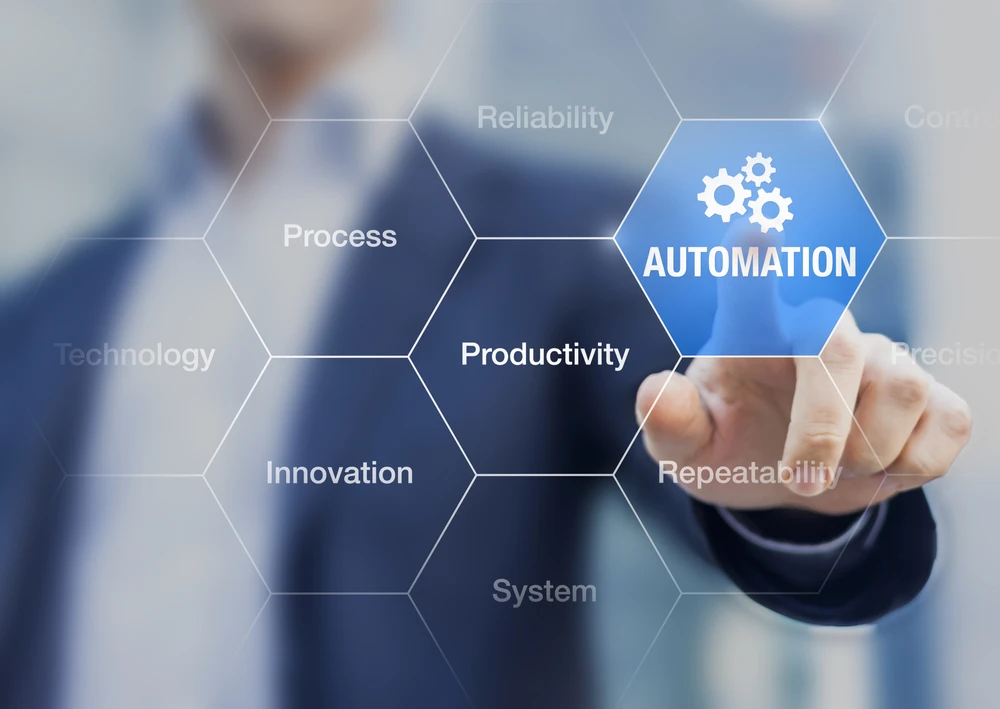- Home
- /
- Custom IT Solutions for...
- /
- Digital Transformation Solutions
- /
- Consolidation and Automation Unify...
DIGITAL TRANSFORMATION SOLUTION
Consolidation and Automation Unify IT Infrastructure Management across Heterogeneous IT Environments and needs

Two perspectives – fewer assets mean lower Total Cost of Ownership (TCO), and fewer assets mean fewer endpoints to secure and defend.
That said, consolidation and automation help boost your network and server performance, wherein administrators can have fewer IT assets to manage.
The perspective of automation in the context of Consolidation and Automation is the process where we utilize automation to make network and asset provisioning, management, and security in order to continuously maximize the efficiency and functionality of your IT Landscape. Automation is often used in conjunction with virtualization solutions including Software Defined Data Centers, Software Defined Network (SD WAN), and infrastructure as a code.
Consolidation and Automation help unify IT infrastructure management across heterogeneous IT environments and needs, while also:
- Reducing your IT landscape spread by decreasing the number of devices – this helps in building a better security envelop around your IT Assets while also reducing the cost of infrastructure as well.
- Reducing the complexity in the management of your IT assets
- Improving the utilization of your IT landscape by removing underutilised and replaceable end-points
- Improving the turnaround for service requests and incident management due to the heavy automation framework that typically accompanies higher percentages of virtualization in the IT landscape
WHAT TO EXPECT
An effective Consolidation and Automation strategy that combines people, processes, and technology entails:
- Hyper Converge & Converged Platforms: reduces data centre complexity, improves scalability, increases visibility into resource consumption, and embeds vendor support and vendor-validated solutions. Consequently, convergence helps you independently tune different components of the converged IT infrastructure and manage them more effectively and efficiently.
- Network Functions Virtualization: saves cost, offers better scalability, and allows you to allocate available resources to the applications and services that need them. Virtualized networks have the additional advantage of adding an automation layer on top to improve service request fulfilment and incident management response times.
- Unified Storage: Wins hands down for its efficiency and convenience. It saves cost, space, and power. Consolidation and Automation in storage devices allow disk capacity to be more efficiently utilised while allowing you to manage the storage efficiently and also aids in automated provisioning, thus improving user experience and being flexible to business needs.
- Workload Automation: Automating repetitive tasks has a three-fold benefit when it comes to consolidation and automation. Firstly, you get to centrally control and manage multiple tasks with WLA and also schedule enterprise-wide tasks. Secondly, you have the advantage of consistent performance when you remove the human touchpoints. Lastly, the ability to orchestrate automation, allows you to exploit self-service opportunities in your landscape, thus significantly reducing the turnaround for service requests and incidents.
- Privilege Rights Automation: Consolidation and Automation significantly relies on automating access-related tasks through Robotic Process Automation. Doing this has a two-fold advantage – Firstly, you are now able to transition to a role-based and persona-based user access management strategy and process. By itself, this reduces contacts to the helpdesk and improves user experience and productivity. Secondly, role and persona-based access is an important tool in Consolidation and Automation solutions to prevent unintended grant of privileges and access, thus reducing security risks significantly.
- Automated fixes or Auto Heal: One of the advantages of Consolidation and Automation, especially, virtualization, is that you can now use RPA and scripts to address issues in your IT landscape – at least the most frequently occurring ones. Auto Heal in turn helps you transition to a proactive infrastructure management that reduces mean time between failures (MTBF), consequently improving business uptime.
- IT & Security – Impact, Change, and Configuration Automation & Management: helps with automatically managing and monitoring updates to configuration data.
- IT Help Desk & Service Delivery Management: positively influence your agency’s image and customer satisfaction rates by ensuring effective delivery of IT services.
- Arm your enterprise with DC-DR Drill & Automation to overcome serious incidents and resume normal business operations as quickly as reasonably possible.
